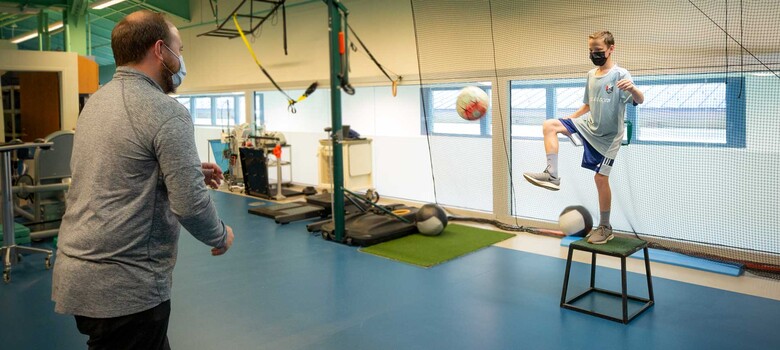Augmented-Reality May Be a Game Changer for Hip Replacement Surgery

Duke orthopaedic surgeons are using what looks like a gaming headset to improve outcomes for people who need hip replacement surgery. The new, head-mounted augmented reality (AR) system projects 3D models of a patient’s anatomy, implants, and surgical instruments onto the patient during the procedure. In other words, this gives surgeons “x-ray vision” into the body and improves surgical accuracy.
A Big Leap Forward
During traditional hip replacement surgery, doctors use 2D X-rays of a patient’s anatomy to plan the procedure. According to Samuel S. Wellman, MD, a joint replacement surgeon at Duke Health, AR-guided hip replacement relies instead on CT scans taken before surgery. The three-dimensional nature of a CT scan gives more details about a patient’s anatomy than X-rays alone. It also allows a computer model of the pelvis and femur to be created. This model is used to design a surgical plan that specifies the size, orientation, and position of the hip replacement components. The computer model and plan are loaded into the AR headset, allowing the surgeon to visualize them directly while performing the surgery.
During the operation, the surgeon temporarily places a small tracking device on the patient’s pelvic bone. When the AR lenses pair with the tracker, the patient’s anatomical information is projected inside the body. The surgeon can view a patient's unique anatomy to precisely place the implant. “Being able to actually see the bones of the pelvis without having to look back and forth between the screen and patient is potentially going to be a big leap forward,” said Dr. Wellman.
Seeing Past Small Incisions
Whenever possible for hip replacement, Duke orthopaedic surgeons use minimally invasive techniques, which require smaller incisions than traditional surgery. Patients may experience less pain and enjoy a quicker recovery. But smaller incisions can limit a surgeon’s view of the joint, making it more challenging to perfectly align hip replacement components.
AR technology solves that problem by letting surgeons see their patient’s internal anatomy as they are operating. “The augmented reality is nice because I'm looking into the hip and at the surgical plan at the same time,” explained Dr. Wellman. “It helps me be more precise with positioning the implant and really minimizes the chance of people having complications like dislocation or leg lengths difference.”
Anyone undergoing a total hip replacement at Duke is a candidate for AR-guided surgery. It’s just one example of Duke’s efforts to expand patient access to the latest innovations in hip replacement.




